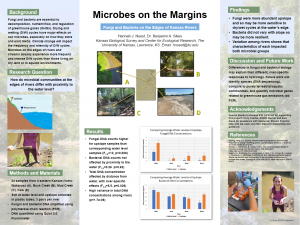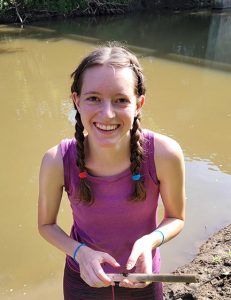The muddy banks of Kansas rivers are home to all sorts of bacteria and fungi. But little is known about how microbes at the water’s edge endure a habitat with endless cycles of soaking and drying.
Hannah Nuest, University of Kansas (KU) senior from Hutchinson, Kansas, spent summer 2021 trying to find out more about the microbes that live along river and stream banks with guidance from KU Associate Professor Benjamin Sikes.
Hannah was one of 10 students supported by Kansas NSF EPSCoR to participate in a Research Experiences for Undergraduates (REU) program.
She has presented her results twice and even won the best poster award at the Governor’s Conference on the Future of Water in Kansas in November.
Here’s Hannah’s story.
What did you find most interesting about your project?
We tend to think about purely aquatic or purely terrestrial ecosystems and not as much about the areas that can be both wet and dry. I wanted to learn more about what types of organisms can live at the water’s edge in a space that can be so drastically different depending on the day.
What were your most surprising results?
My most interesting finding was the impact on fungi, which I discovered is more sensitive to the dry/wet cycles at the water’s edge than bacteria.
What was it like to work in a lab?
The first couple weeks were spent just figuring out what I was doing. It was a lot of reading. I didn’t have any idea what I was doing at first, but then I learned a few lab skills.
Did this experience impact your career path?
I’m still very undecided, but it made me more open to doing research. I’m planning to do study abroad in Costa Rica this spring.
How did you hear about the program?
Dr. Terry Loecke brought it up in my environmental studies class and he connected me with Dr. Sikes.
Learn more about Hannah’s research on microbes at the margins of riverbanks:


